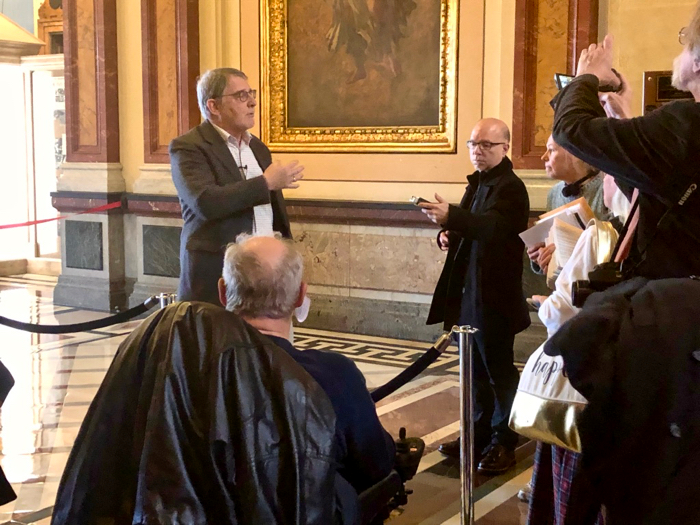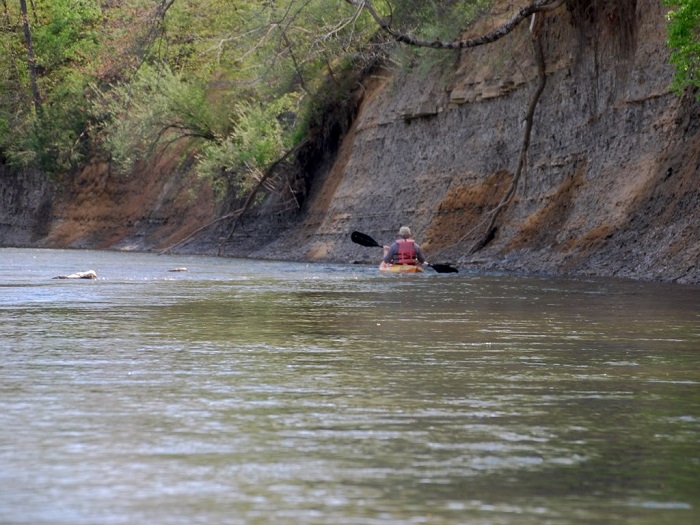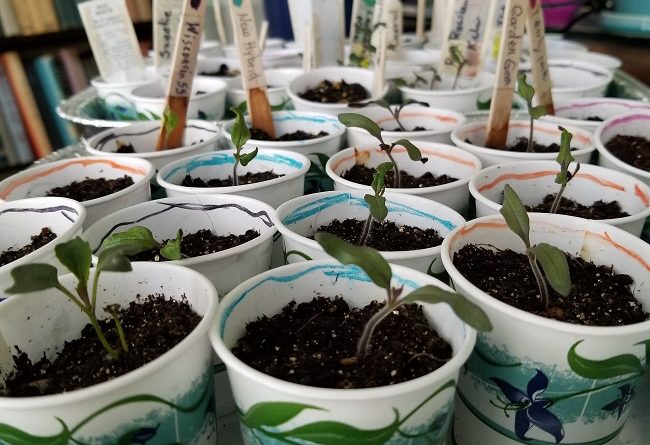It’s the Seed-i-est Time of the Year!
Podcast: Play in new window | Download (Duration: 1:45:00 — 49.1MB)
Subscribe: Apple Podcasts | Spotify | Android | iHeartRadio | Podchaser | Email | TuneIn | RSS | More
Ladies and gents, start your seeds!
![]() January 27, 2019 – We’re headed for some record breaking cold this week in the Chicago area, so it must be time to think about seed catalogs and seed starting. Yeah, I don’t get it either.
January 27, 2019 – We’re headed for some record breaking cold this week in the Chicago area, so it must be time to think about seed catalogs and seed starting. Yeah, I don’t get it either.
It also means that we welcome back show regular Lisa Hilgenberg, Horticulturist at the Regenstein Fruit and Vegetable Garden at the Chicago Botanic Garden. Her day job job involves caring for about 50,000 vegetables during the growing season. Sounds like a a classic gardener’s nightmare to me.
She’s here today to talk seeds, seed catalogs and seed events. We start with some seed events. Yesterday and today are part of Super Seed Weekend at the Chicago Botanic Garden. Today is Seed Swap Sunday, and it features the lecture “Food, Community and the Power of Seed” by Jovan Sage of Seed Savers Exchange. That talk is at 1:30 p.m., followed by the Seed Swap from 3 to 5pm.
If you can’t make it to CBG today, here’s a list of seed swapping events from Sarah Batka, former co-host of The Mike Nowak Show. She is Local Foods Small Farms Program Coordinator for University of Illinois Extension, Cook County.
But if you don’t collect seeds yourself, where should you order them? When Lisa was on our show two years ago, she provided a list of some of her favorite catalogs.
Baker Creek Heirloom Seeds – 417-924-8887 (fax)
The Cooks’ Garden (Burpee) – 800-457-9703
High Mowing Organic Seeds – 866-735-4454
Johnny’s Selected Seeds – 877-564-6697
Pinetree Garden Seeds and Accessories – 207-926-3400
Seed Savers Exchange – 563-382-5990
Friend of the show Mr. Brown Thumb appears from time to time on this program to talk about seed starting. A couple of years ago, he wrote a piece called Easy Plants to Grow from Seed. And several years ago he wrote a piece for Treehugger called 10 Best Heirloom Seed Companies as Selected by Readers. That list overlaps quite a bit with Lisa’s, though you might discover something slightly different that you like.
Mother Earth News did a story called Best Vegetable Seed Companies, where they list their top 15 sustainable seed companies.
Also, I recently received a newsletter from my friends at the Peterson Garden Project. Their blog, We Can Grow It, has great tips for ordering seeds, setting up a seed starting station, and preparing for a seed swap.
If you’re not sure exactly when to start your various seeds, Lisa points out that Johnny’s Selected Seeds has Seed-Starting Date Calendar. You just plug in the date of your local spring frost-free date, which you can find here.
Finally, if you’re tired of hearing about seed stuff, Lisa reminds us that The Orchid Show comes to the Chicago Botanic Garden from February 9 to March 24. This year it is called “In the Tropics,” which is something that we could use this week.
Peggy and I are thinking about having some of the Orchid People on our program. On the “Obsessed with Plants” continuum, they’re scarier than the Bonsai People, but not as frightening as the Carnivorous Plant People. Just sayin’.
Ridding Illinois of toxic coal ash
January 27, 2019 – On April 29 of last year, I wrote that the
Middle Fork of the Vermilion is the state’s only officially designated wild and scenic river. Unfortunately, it is now being acknowledged for a more dubious distinction. On April 9, it was named one of America’s Most Endangered Rivers® of 2018 by the American Rivers organization. Incidentally, 2018 marks the 50th anniversary of the Wild and Scenic Rivers Act.

This was an introduction to a conversation with Pam and Lan Richart. They are co-directors of the Eco-Justice Collaborative (EJC), and long-time friends of The Mike Nowak Show with Peggy Malecki. At the time, they were spreading the word about something called coal ash. It is also known as coal combustion residuals or CCR. And 3.3 million cubic yards of it sits in unlined, leaking pits in the floodplain along the Middle Fork of the Vermilion.
The story goes back fifty-five years to the construction of the Vermilion Power Generating Station. That coal-fired power plant was built by Illinois Power along the west bank of the Vermilion River in 1956. It was purchased by the energy company Dynegy in 2000, which operated the plant until 2011, when it was decommissioned. In April of 2018, Vistra Energy Corp. merged with Dynegy, with the new company operating under the name Vistra. Are you still with me?
Coal ash is already contaminating ground water in the area, something that was documented by Dynegy itself. In July of 2012, the Illinois Environmental Protection Agency (IEPA) issued a Notice of Violation. Subsequently, Dynegy proposed what is being called a “cap and leave” solution. They want to permanently cap the coal ash, “stabilize” the nearby river bank, wipe their hands and pat themselves on the back for a job well done.
But with water already seeping into and through the coal ash, that’s not acceptable to people who believe–and rightly so–that the river banks will eventually be compromised anyway. So, the folks at EJC continue to agitate for a real solution. A little more than a month after we spoke to Pam, Lan and Andrew Rehn, water resources engineer with Prairie Rivers Network, EJC convened a “People’s Hearing” June 11, 2018, at Bremer Conference Center, Danville Area Community College.
Then, in November, Eco-Justice Collaborative and the Protect the Middle Fork Citizens Group joined Prairie Rivers Network, the Environmental Integrity Project, Earthjustice, and the Sierra Club in Springfield. They released “Cap and Run: Toxic Coal Ash Left Behind by Big Polluters Threatens Illinois Water.” That’s a new report on groundwater pollution across Illinois due to toxic coal ash left behind by Big Polluters.
The report finds that
- There are more than two dozen coal ash dumpsites spread across Illinois that contain over 80 individual ash ponds and landfills. Almost all of these ash dumps sit right next to rivers and lakes, separated from them only by thin earthen embankments. They are disproportionately located in communities with limited resources but pose a threat that extends far and wide.
- The vast majority of coal ash ponds in Illinois are unlined. Just two of thirty-five reporting Illinois coal ash ponds have liners. This means there is little or nothing stopping the toxic pollution in those ash ponds from leaching into groundwater.
- These dumps are leaching toxic pollution into groundwater. Our report shows that 22 of 24 power plants for which we have groundwater monitoring data are leaching unsafe levels of dangerous pollution into Illinois waters. Coal ash pollutants at unsafe levels in Illinois groundwater include but are not limited to arsenic, boron, cadmium, cobalt, lead, selenium, and thallium.
As 2019 starts, EJC is fighting the latest proposal by Vistra/Dynegy to “solve” the problem. This past summer, Dynegy Midwest Generation submitted an application to the U.S. Army Corps of Engineers for riverbank stabilization. Remember that? It’s the first step in “cap and leave” or “cap and run,” if you prefer. EJC responded on January 7 with a detailed comment letter to the U.S. Army Corps of Engineers, objecting to the plan.
EJC argues that it will:
-

Middle Fork of the Vermilion River Disturb soils and riverbed sediments contaminated by leaching coal ash chemicals, degrade water quality and redistribute coal ash pollutants downstream
- Disrupt nearly 5 acres of stream bank and stream bed for the 9 to 12 month construction period, with the potential to adversely impact the river and its biological systems.
- Alter the stream channel, resulting in changes to hydraulics that could have cumulative negative effects on areas immediately downstream.
- Add over 1/3 mile of hardscape that could have lasting impacts on downstream flow dynamics, bedload and sediment transport.
- Require construction in the river (as much as 70 feet into the channel), because there is insufficient room between the channel and the coal ash impoundments to place equipment.
- Degrade the scenic value of the river by placing 2,000 feet of rip rap along this otherwise undeveloped river corridor.
EJC wants Dynegy, which reportedly is planning to dispose of about 60% of the ash, to remove ALL of it. EJC says that it can be recycled into products like concrete.
This battle is a long way from over. But in the era of climate change, which we discussed last week with MWRD Commisioner Debra Shore, rain events in the Midwest are unpredictable, and 3.3 million cubic yards of coal ash sitting in a flood plain is a recipe for disaster.
Pam and Lan Richart join us again this morning to continue the story. Meanwhile, you can take action by writing to your local elected officials to urge them to protect what’s left of our clean water.
There’s something else you can do. According to the Eco-Justice Collaborative, the National Park Service (NPS) can stop Dynegy’s massive riverbank project. They simply need to follow requirements of the Wild and Scenic Rivers Act of 1968. You can find talking points and a form to send to the NPS here.


